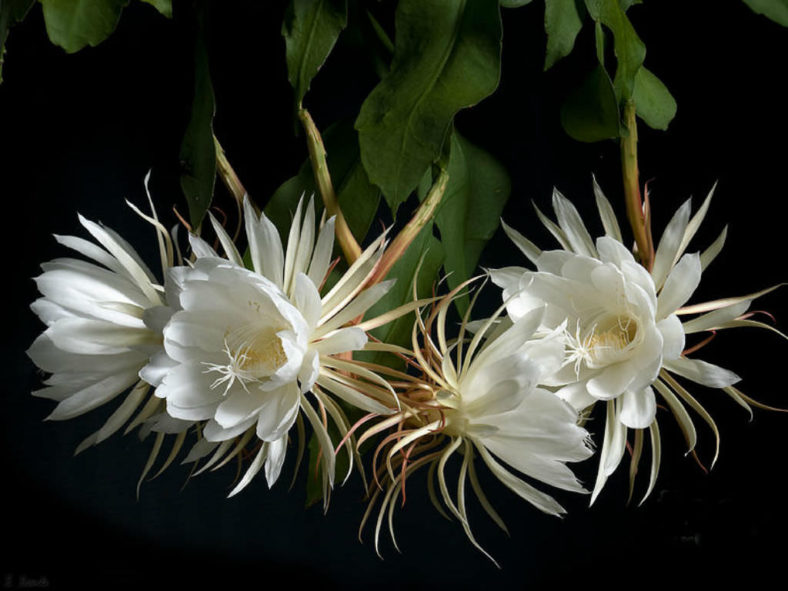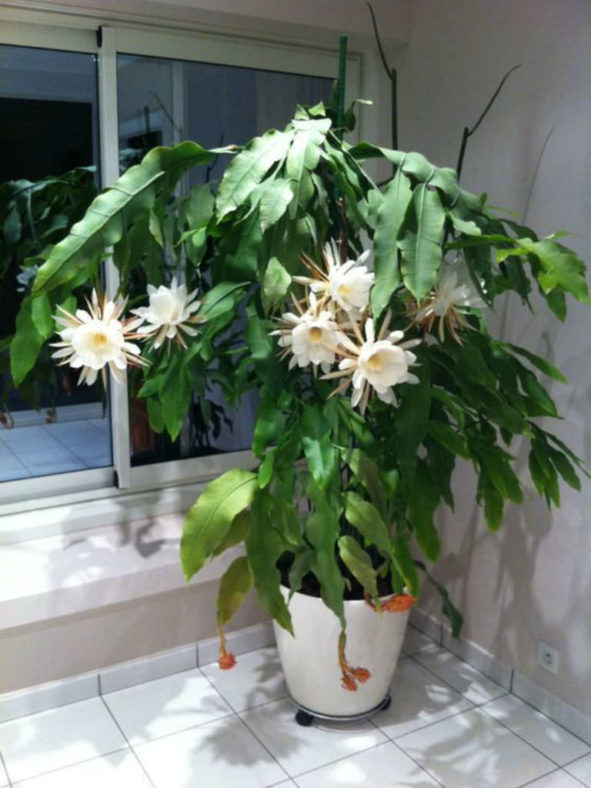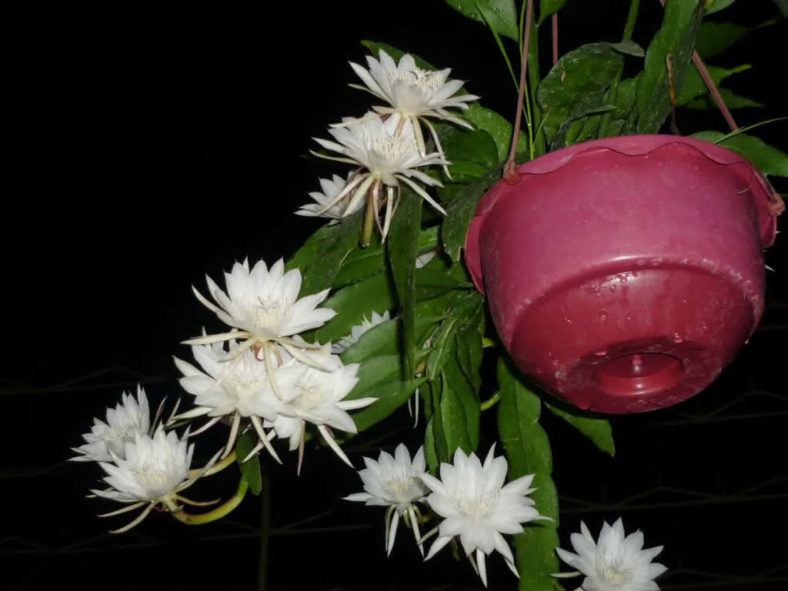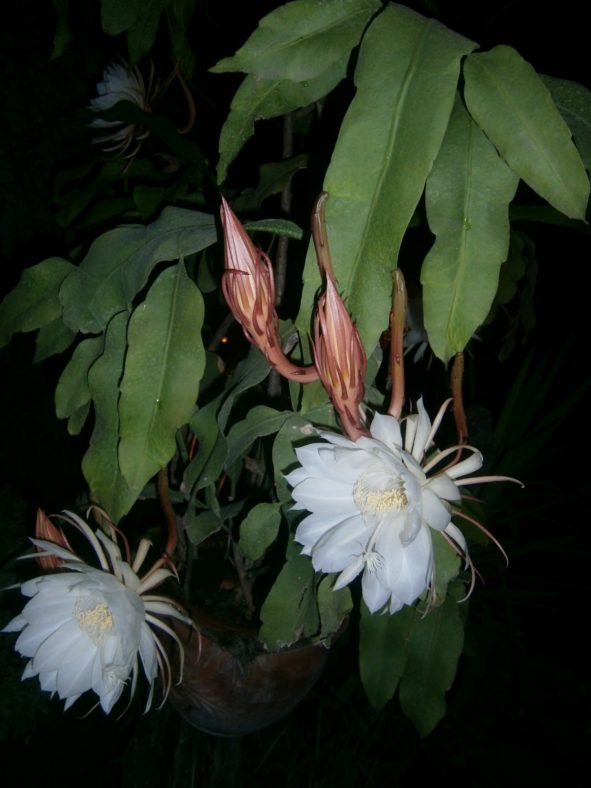Scientific Name
Epiphyllum oxypetalum (DC.) Haw.
Common Name(s)
Dutchman's Pipe Cactus, Jungle Cactus, Lady of the Night, Night-blooming Cactus, Night-blooming Cereus, Orchid Cactus, Queen of the Night
Synonym(s)
Cereus oxypetalus, Phyllocactus oxypetalus
Scientific Classification
Family: Cactaceae
Subfamily: Cactoideae
Tribe: Hylocereeae
Genus: Epiphyllum
Etymology
The specific epithet "oxypetalum" (pronounced "oks-ee-PET-al-um") means "sharp-petaled" and refers to the petals of this species that taper to a point.
Origin
Epiphyllum oxypetalum is native to southern Mexico and extensive areas of South America.
Description
Epiphyllum oxypetalum is a profusely branched epiphytic cactus with a cylindrical, erect or semi-erect primary stem that bears leaf-like, scalloped, dark green branches. It is one of the most cultivated species in the genus. The main stem is woody at the base. The branches can grow up to 16 inches (40 cm) long and 2.4 inches (6 cm) wide.
The large, white, funnel-shaped flowers can reach a length of 12 inches (30 cm) and a diameter of 5 inches (20 cm). They are nocturnal and fragrant and appear in late spring or early summer, opening in the late evening and closing again at sunrise. The fruits are purplish-red, oblong, and angled, and can grow up to 6.4 inches (16 cm) long and 3.2 inches (8 cm) in diameter.

Hardiness
USDA hardiness zones 10a to 11b: from 30°F (-1.1°C) to 50°F (10°C).
How to Grow and Care
Epiphyllums are hardy to about 50°F (10°C) but require at least 60°F (15°C) during the growing season, so they are best grown in a heated greenhouse or indoors. Place the pots in bright, filtered light with moderate to high humidity. To increase the humidity, position the pot on a tray filled with gravel and keep this topped up with water, but not enough so that the water reaches the surface. These cacti require sharply drained growing media. Grow them in standard cactus soil with added grit or perlite. Alternatively, mix three parts of loam-based compost with two parts of grit or perlite and one part of peat-free multipurpose compost.
Overlong stems can be cut off or shortened. New shoots will usually develop just behind the cut. However, be careful not to overwater after pruning, as the plant's water requirements will be reduced. Large Epiphyllums can become unstable in their pots. Repot into a heavier pot, such as terracotta, or a wider container, such as a pan. Alternatively, try canes and tying the stems up, but this can look unsightly.
Learn more at How to Grow and Care for Epiphyllum.
Links
- Back to genus Epiphyllum
- Succupedia: Browse succulents by Scientific Name, Common Name, Genus, Family, USDA Hardiness Zone, Origin, or cacti by Genus
Photo Gallery
Click on a photo to see a larger version.


